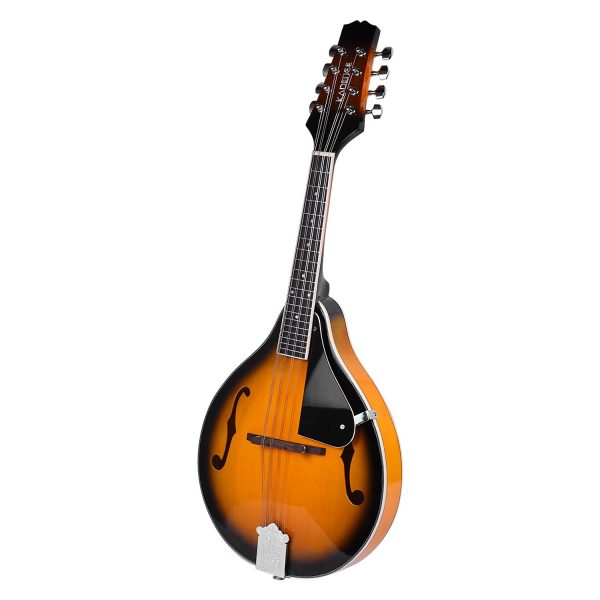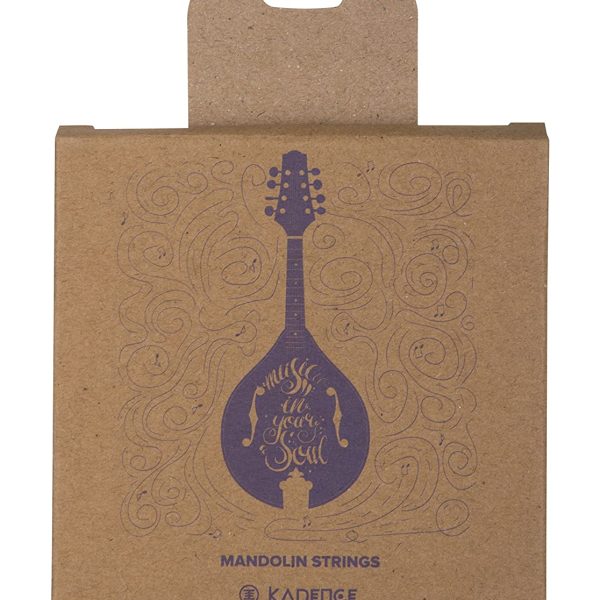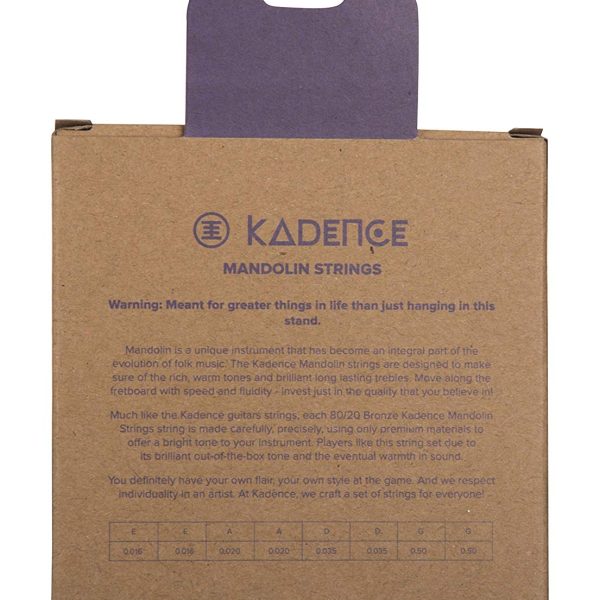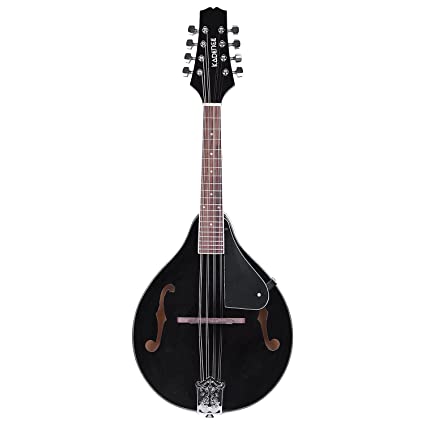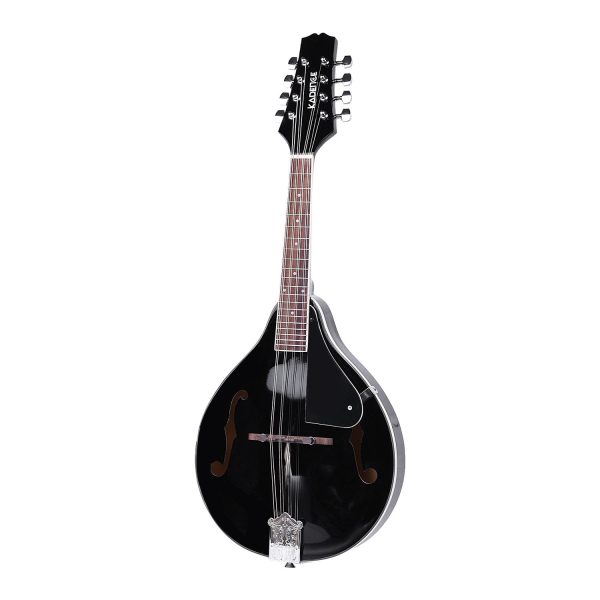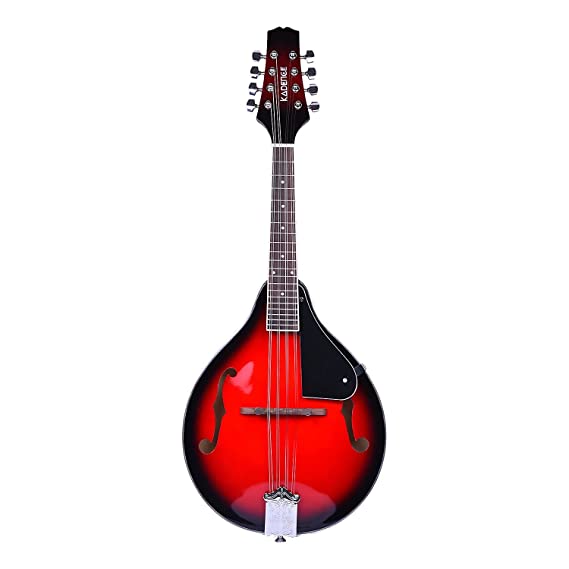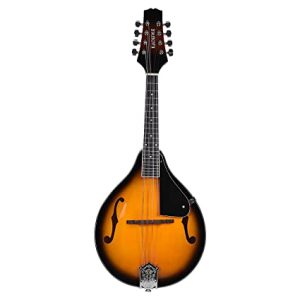Mandolins
What is a Mandolin?
Origins and Evolution
The mandolin traces its roots back to the lute family of instruments, with its development occurring in Italy during the 17th and 18th centuries.
Over time, it evolved into the instrument we recognize today, featuring a rounded body, a flat soundboard, and eight strings paired in courses.
The mandolin’s distinctive sound and versatility have made it a favorite in various music genres, from classical to bluegrass.
Types of Mandolins
There are essentially two major types of mandolins, the Bluegrass and the Classical, and the Bluegrass can be further categorized into A-style and F-style based on the body style.
1. Bluegrass Mandolin
The bluegrass is the American cousin of the mandolin family. Originally developed by Gibson, this type of mandolin is commonly played by country, rock, folk and as the name bluegrass suggests, by bluegrass musicians.
This bluegrass is usually carved out of a single piece of wood and it features an arched top and back.
These mandolins are thus very commonly referred to as the “flatbacks” highlighting the fact that they are different than the round-shaped, bowl back mandolins, which will be covered next.
The bluegrass mandolins can be further categorized into A-style and F-style based on their cosmetic differences.
a) A-Style Mandolin
The A-style mandolin is characterized by its teardrop-shaped body.
This classic design is favored for its simplicity and affordability, making it an excellent choice for beginners.
b) F-Style Mandolin
With its ornate and stylized body, the F-style mandolin is a more visually striking option.
This design is often preferred by seasoned players for its enhanced resonance and projection.
2. Classical/Bowl-Back Mandolin
Also known as the Neapolitan mandolin, this bowl-back design mandolin provides a unique tone and aesthetic.
These mandolins represent the original version of the instrument and their history dates back to as early as 17th century.
Although they are less common today, it’s still cherished for its rich, warm sound by mandolin enthusiasts.
Now let’s talk about,
How to Play the Mandolin
Getting Started
Mastering the mandolin requires a combination of finger dexterity and musical theory. Begin by familiarizing yourself with basic chords and scales, gradually progressing to more complex arrangements.
Picking Techniques
The mandolin is known for its distinct plucking sound. You can explore techniques like tremolo, cross-picking, and double stops to add depth and texture to your playing.
Maintaining Your Mandolin
Cleaning and Storage
Proper care is crucial for maintaining the mandolin’s pristine condition. Clean the instrument regularly with a soft cloth, and store it in a protective case to shield it from dust and humidity.
String Maintenance
Regularly check and replace strings to ensure a crisp and vibrant sound. Cleaning the fretboard with a damp cloth can help prolong the life of both the strings and the instrument.
Choosing the Right Mandolin for You
When selecting a mandolin, factors such as budget, skill level, and musical preferences come into play. Test multiple instruments to find the one that resonates with your unique style and preferences.
Frequently Asked Questions (FAQs)
1. What is the best Mandolin for beginners?
For beginners, an A-style mandolin is a great starting point due to its simplicity and affordability. Kadence, India’s leading musical instrument and accessories brand, offers reliable options for novice players.
2. How often should I change Mandolin strings?
String replacement frequency depends on factors like playing frequency and environmental conditions. As a general rule, consider changing strings every 3-6 months for optimal sound quality.
3. Can I use a guitar pick for my Mandolin?
While it’s possible to use a guitar pick, many mandolin players prefer a specialized mandolin pick. Experiment with both to find the option that suits your playing style.
In conclusion, the mandolin is a captivating instrument with a rich history and diverse appeal. Whether you’re a beginner or an experienced musician, exploring the nuances .



